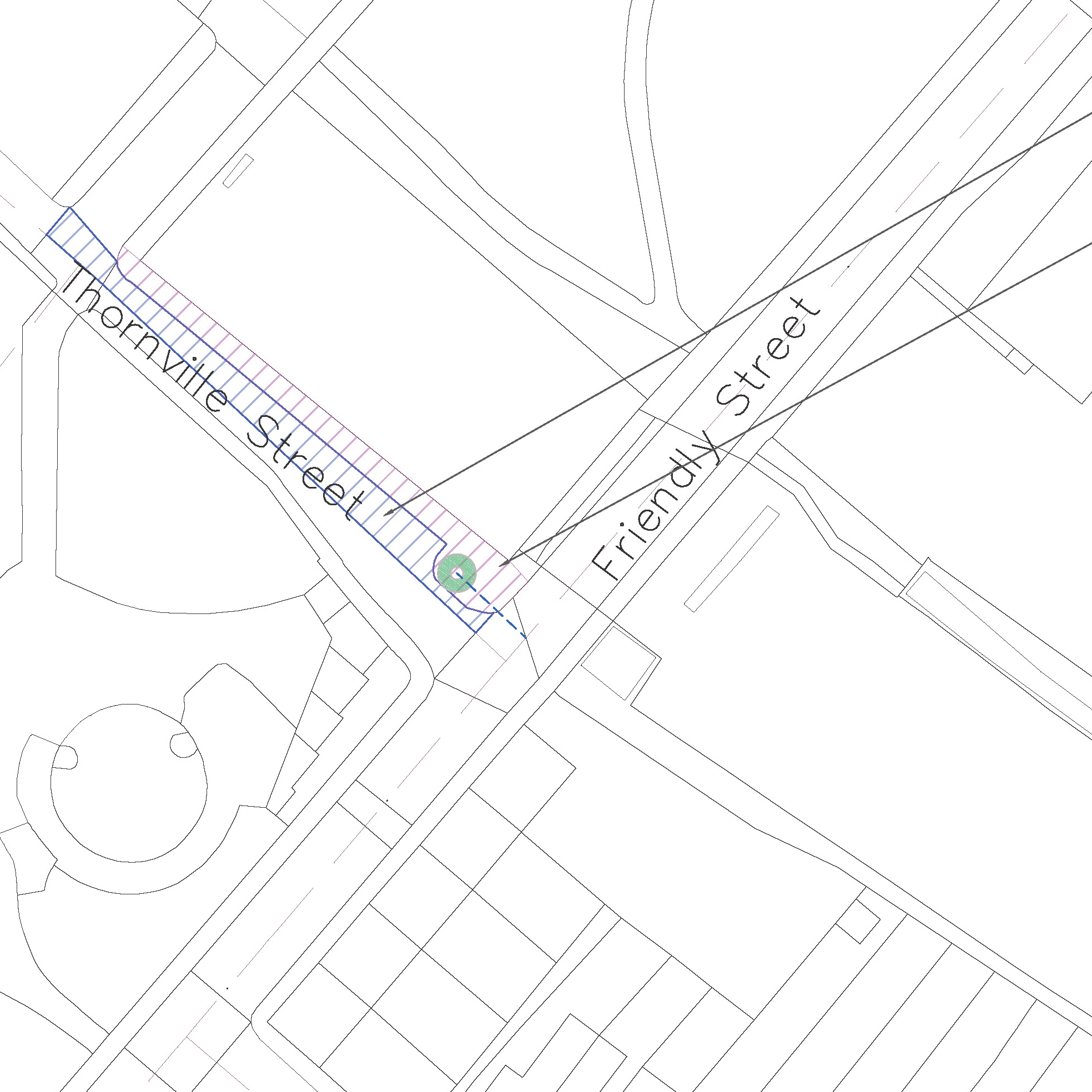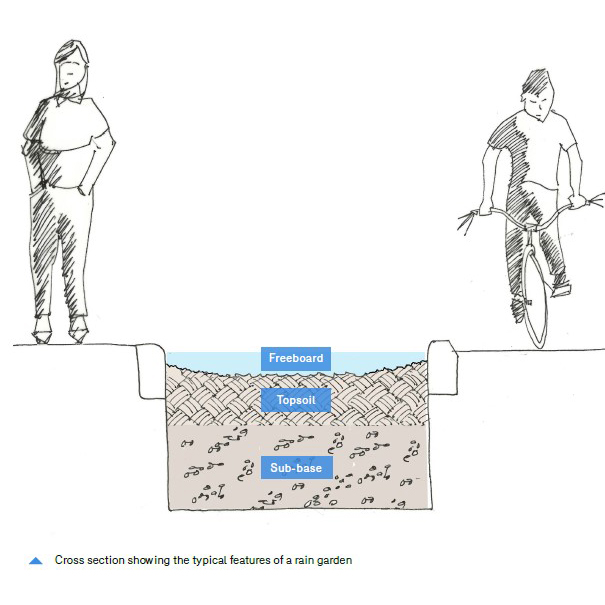The world’s cities occupy just 3% of the earth’s land, but account for around 75% of carbon emissions. Cities are also particularly vulnerable to climate change and natural disaster impacts.
The Grey to Green scheme in Sheffield is the UK’s largest inner city ‘Green Street’. The project was based on decades of detailed research by Professor Nigel Dunnett. A primary objective of his work is to move horticulture from a largely cosmetic role to being central to the discussion of how to address the major problems of climate change and a sustainable future.
The St John’s Society would like to implement a number of similar measures that recognise the beauty and value of nature but also increase resilience in our community. The proposed rain garden will transform a grey, dead tarmacked area into a green space, increasing local biodiversity and creating the first new green corridor for pedestrians. The removal of concrete and tarmac helps to reduce the urban heat island effect and slows the rainfall journey to drains and sewers, reducing overall load on the sewer system.

Site – Thornville Street
The junction of Thornville Street and Friendly Street next to the width restrictions was chosen as the site for the first ‘grey to green’ project in St John’s. Thornville Street is a lightly used road running parallel to the railway line and is a pedestrian thoroughfare for parents and their children walking to Lucas Vale Primary School. The site is a large area of tarmac on an gradient up from Friendly Street towards Lucas Vale. During a downpour rainwater gushes down Thornville Street towards Friendly Street.
The presence of an existing drainage gully means no additional utilities would be required, simplifying the project construction. The presence of an existing gully can provide a potential overflow for when the rain garden is ‘full’ of water.
Funding bid, Success


A bid was submitted by Alex and Paul Middleton to Thames Water for funding as part of their Surface Water Management Programme. During her MSc in Risk Disaster and Resilience, Alex undertook a study project on flooding, risk modelling and mitigation which helped enormously in the bid proposal. The bid was successful and £10K funding for the project was awarded by Thames Water in June 2022.
A project team to deliver the project has been set up and is comprised of:
- Stephen Porter (Thames Water)
- Paul Middleton and Nick Blomstrand (St. John’s Society)
- Marcus Gayle (Lewisham Climate Resilience Team)
- James Crispin Swayne and Luke Forsythe (Father Nature)
The initial rain garden designs were presented at the first of a series of public talks at the Brookmill Pub in November 2022. You can hear the talks and see the slides here.
Design



The premise of the rain garden is to replace an area of tarmacked road and pavement with free draining soil and an area planted with drought and flood tolerant plants. The planting scheme will be developed by Father Nature, who have delivered several rain gardens for the London Borough of Lambeth. A useful guide published by Urban Design London can be found here – Designing Rain Gardens: A Practical Guide.
Rain gardens have numerous benefits. They restore the natural water retention of undeveloped land and therefore reduce the volume of water entering the sewerage system and treatment facilities. The removal of tarmac and concrete surfaces decreases the ‘urban heat island’ effect, and the introduction of green space and plants attracts wildlife and improves biodiversity.
The proposed 36m² rain garden has an ‘effective catchment area’ of around 250m², that is the area of road and pavement where rainwater runs off from and will flow into the rain garden. In a heavy downpour, the rain garden will retain this water and release it slowly into the sewer system, thus reducing the load on the infrastructure and leading to fewer floods. A functioning rain garden also helps to clean and filter pollutants from the run off – oil and rubber from cars are prevalent on roads.
Survey

Accurate drawings are key to the project. We engaged with a measured survey company who utilise 3D scanning equipment to map the site from multiple perspectives. The resultant 3D model is used to generate drawings needed for the design, costing and communication of the project.
What’s Next?

The SJS team now has to finalise the design and complete the drawings. The drawings will be sent for risk assessments and safety checks, used for obtaining the necessary statutory permissions from Lewisham Highways and firming up a price for the works with a roadworks contractor. Once the site is dug, the hole will be filled with sub-base stones and aggregate and soil that will be provided by the landscape gardeners. We will hold a series of public planting events to fill the garden with appropriate plants and shrubs.
This rain garden is intended to be the first of many in the area and we are looking to develop a masterplan for further greening projects. We aim to publish some ‘lessons learned’ on our experience on the project and share this with other groups looking to implement similar schemes.
What can you do?
- Suggest sites for the next rain garden project.
- Keep an eye out for community planting events
- Suggest local businesses who might want to sponsor plants in return for advertising space on the garden.

